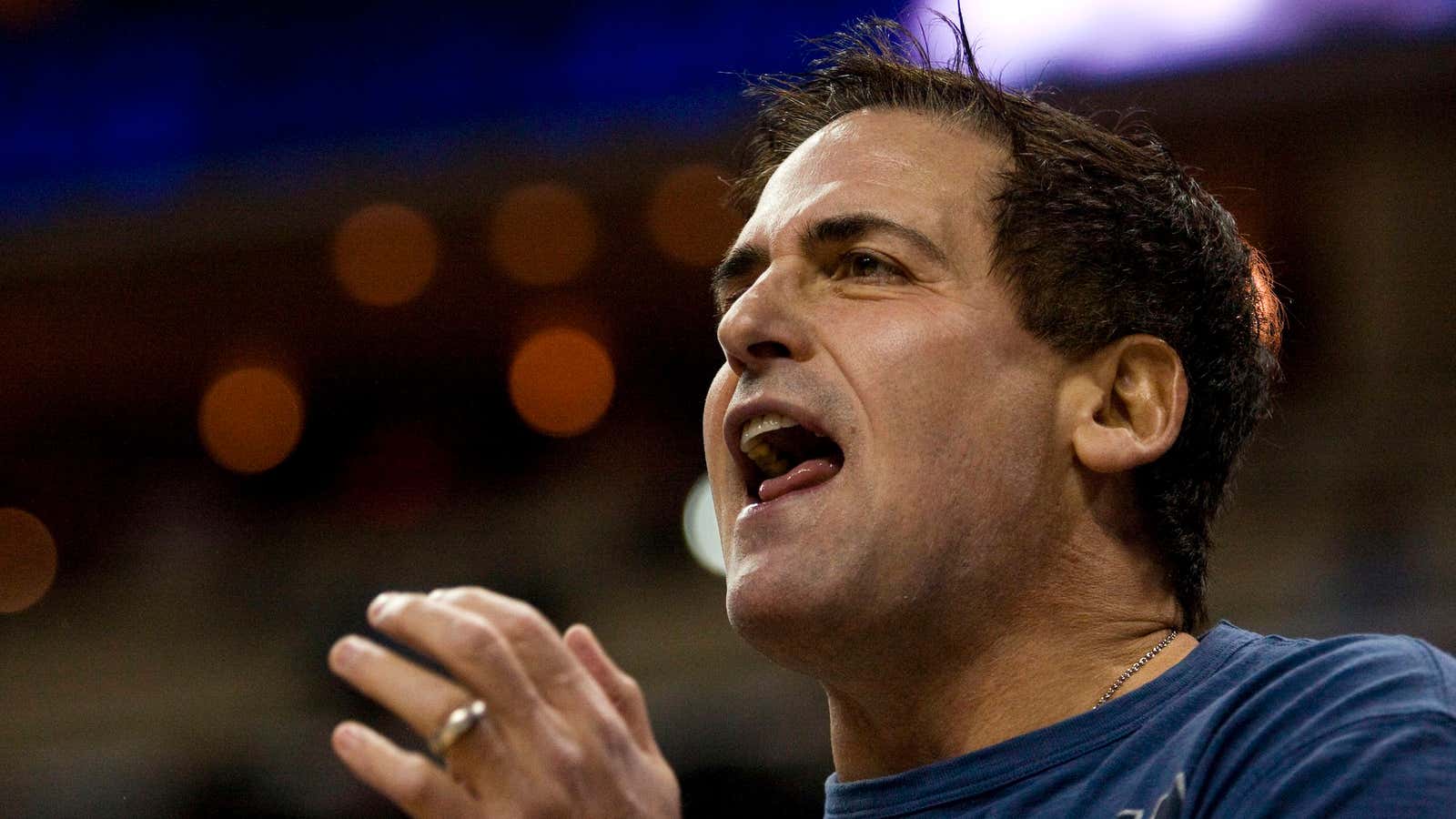Outspoken billionaire Mark Cuban has a bone to pick with the US Securities and Exchange Commission. Less than a year after scoring a huge victory against the regulator, he took to Twitter and YouTube this week to deride the agency, which he locked horns with in a testy, years-long legal battle in which he fought off insider trading charges.
What has Cuban so worked up this time? Apparently, the process for getting SEC guidance on what constitutes insider trading.
Cuban tweeted a clip from a YouTube video in which he follows telephone instructions for filing a ”no-action letter,” a formal request that the agency weigh in on whether a specific trade could be deemed a violation of securities law.
The full video, which includes more explanation from Cuban as to what he’s researching and why he’s researching it, is here:
Here are some highlights from Cuban’s rant against the process, which is based on procedures the SEC outlined 34 years ago, and apparently hasn’t updated much since:
This is not going to accomplish anything and this is certainly not going to help any normal individual who’s thinking about buying stocks in the market. It’s not going to help them understand insider trading and it’s not give them comfort that were doing all they can to not break the law. Which based off of my experience is not shocking … and if it seems like I’m going on and going off about the SEC, well, this was an easy change for them to step up and answer a question. Instead me and everybody else going through this gets a memo from 1980. Way to go, [SEC chief] Mary Jo White. Good Job!
Here’s the memo(pdf) that Cuban references.
Cuban makes a valid point: insider trading laws can be hard to parse. That’s why the SEC itself urges people to consult with a legal expert. Cuban, with a reported net worth of $2.5 billion, certainly can afford an army of lawyers. But what about everyone else?
